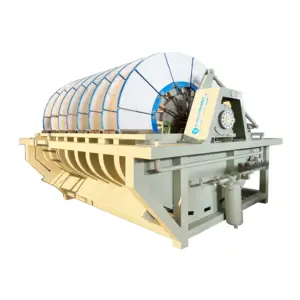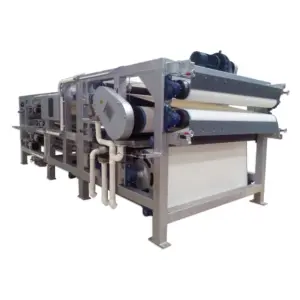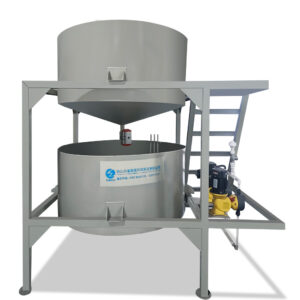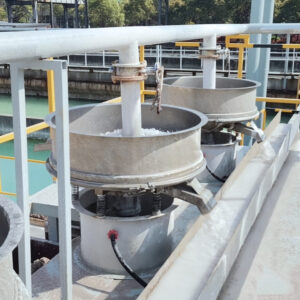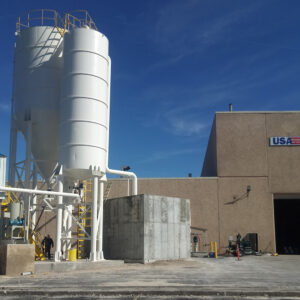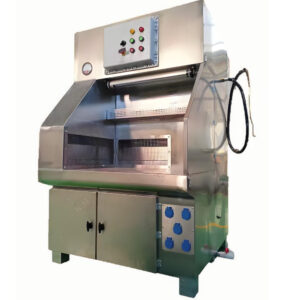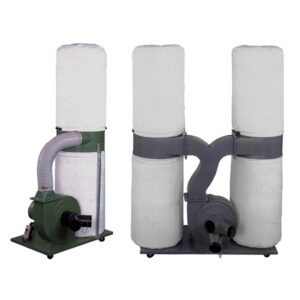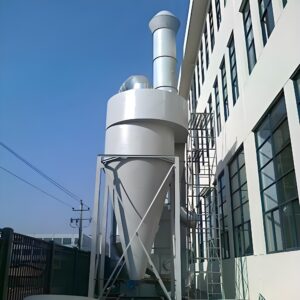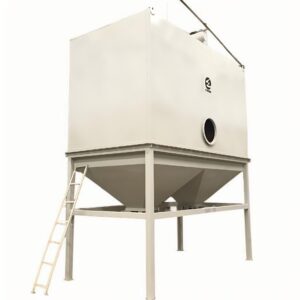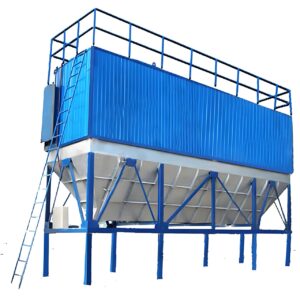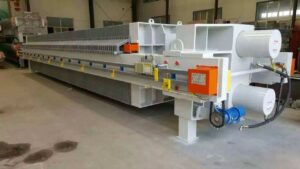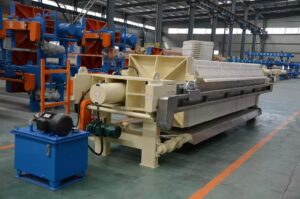Installing a wastewater treatment system represents one of the most critical infrastructure investments for industrial facilities, municipalities, and commercial properties. Wastewater system installation involves complex engineering, regulatory compliance, and long-term operational planning that directly impacts environmental sustainability and operational efficiency. With stricter environmental regulations and rising treatment costs, the stakes for getting this right have never been higher.
The consequences of poor installation decisions extend far beyond initial costs. Facilities face potential regulatory fines averaging $37,500 per violation, operational disruptions that can halt production, and remediation costs that often exceed 300% of the original installation budget. Meanwhile, properly installed systems deliver measurable returns through reduced operational costs, regulatory compliance, and environmental stewardship.
This comprehensive guide provides the technical expertise, practical insights, and strategic framework you need to navigate every aspect of wastewater system installation, from initial planning through ongoing maintenance and support. Whether you’re upgrading an existing facility or planning new construction, these insights will help you make informed decisions that protect both your investment and the environment.
What is Wastewater System Installation and Why Does It Matter?
Wastewater system installation encompasses the complete process of designing, installing, and commissioning treatment infrastructure that processes contaminated water to meet regulatory discharge standards. This involves sophisticated engineering that integrates multiple treatment technologies—from primary clarification and biological treatment to advanced filtration and disinfection systems.
The scope extends beyond simply connecting pipes and tanks. Modern wastewater treatment installation requires careful consideration of treatment capacity, effluent quality requirements, energy efficiency, and long-term operational costs. Industrial facilities typically require customized solutions that address specific contaminants, while municipal systems must handle variable flows and diverse waste streams.
Critical Components of Modern Systems
Contemporary wastewater treatment installations integrate several key components working in harmony. Primary treatment removes large solids and oils through screening and settling processes, typically achieving 30-40% pollutant reduction. Secondary biological treatment utilizes microorganisms to break down organic matter, often achieving 85-95% removal efficiency for biochemical oxygen demand (BOD) and suspended solids.
Advanced treatment technologies, including membrane bioreactors (MBR) and reverse osmosis systems, are increasingly common in installations where space is limited or discharge requirements are stringent. These systems can achieve effluent quality suitable for reuse applications, with total suspended solids below 5 mg/L and BOD levels under 10 mg/L.
| Treatment Stage | Typical Removal Efficiency | Key Technologies |
|---|---|---|
| Primary Treatment | 30-40% BOD, 50-70% TSS | Screening, settling, flotation |
| Secondary Treatment | 85-95% BOD, 85-95% TSS | Activated sludge, trickling filters |
| Advanced Treatment | 95-99% contaminants | MBR, RO, UV disinfection |
Regulatory Compliance and Environmental Impact
Installation decisions must align with increasingly stringent environmental regulations. The Clean Water Act requires facilities to obtain National Pollutant Discharge Elimination System (NPDES) permits, which specify exact discharge limits for parameters like BOD, total suspended solids, and pH levels. Violations can result in significant penalties and operational shutdowns.
In our experience working with industrial clients, regulatory compliance often drives system selection more than initial cost considerations. Facilities in sensitive watersheds may face discharge limits as low as 5 mg/L for BOD and suspended solids, requiring advanced treatment technologies that can increase installation costs by 40-60% compared to conventional systems.
How to Choose the Right Wastewater Treatment System for Your Facility
Selecting appropriate treatment technology represents the most critical decision in the installation process. The choice impacts not only initial capital costs but also decades of operational expenses, maintenance requirements, and regulatory compliance capabilities. Successful selection requires thorough analysis of wastewater characteristics, treatment objectives, and site-specific constraints.
Analyzing Wastewater Characteristics and Treatment Requirements
Comprehensive wastewater characterization forms the foundation of proper system selection. Industrial facilities must conduct detailed analyses measuring not only conventional parameters like BOD, chemical oxygen demand (COD), and suspended solids, but also industry-specific contaminants such as heavy metals, toxic organics, or high salinity levels.
Flow variability significantly impacts system design and technology selection. Manufacturing facilities often experience dramatic flow variations—from minimal weekend flows to peak production periods generating 300-500% of average daily flows. These variations require equalization systems and flexible treatment processes that maintain efficiency across the full operating range.
Temperature fluctuations also influence technology selection. Biological treatment systems operate optimally within 15-35°C ranges, while extreme temperatures can reduce treatment efficiency by 20-40%. Food processing facilities, for example, may generate wastewater temperatures exceeding 60°C, requiring cooling systems or thermophilic treatment processes.
Technology Selection Criteria and Performance Considerations
Modern effluent treatment installation projects must balance multiple competing factors. Treatment efficiency remains paramount, but energy consumption, footprint requirements, and operational complexity increasingly influence selection decisions. Membrane bioreactor systems, while offering superior effluent quality, typically consume 30-50% more energy than conventional activated sludge systems.
According to recent industry research, facilities prioritizing total cost of ownership over initial capital costs achieve 15-25% better long-term return on investment. This analysis must include energy costs, which typically represent 25-35% of total operational expenses for biological treatment systems.
| System Type | Energy Consumption (kWh/m³) | Footprint (m²/m³/day) | Typical Efficiency |
|---|---|---|---|
| Conventional Activated Sludge | 0.3-0.6 | 0.8-1.2 | 90-95% BOD removal |
| Membrane Bioreactor | 0.6-1.0 | 0.3-0.5 | 95-99% BOD removal |
| Sequencing Batch Reactor | 0.4-0.7 | 0.6-0.9 | 90-97% BOD removal |
Site-Specific Considerations and Constraints
Installation success depends heavily on site-specific factors that influence both technology selection and installation approach. Available space constraints often eliminate certain treatment options—conventional activated sludge systems require significantly more area than compact membrane systems, making them unsuitable for urban installations with limited space.
Soil conditions and groundwater levels impact both construction costs and system design. Sites with high groundwater tables may require extensive dewatering during construction, adding 10-20% to installation costs. Rocky or contaminated soils can increase excavation expenses and require specialized construction techniques.
A municipal facility in California faced severe space constraints that eliminated conventional treatment options. By selecting a membrane bioreactor system with a 60% smaller footprint, the facility achieved regulatory compliance while minimizing land acquisition costs. The higher capital investment was offset by reduced land costs and faster permitting approval.
What Are the Essential Steps in Wastewater System Installation?
Professional wastewater system installation follows a systematic approach that ensures regulatory compliance, optimal performance, and long-term reliability. The process typically spans 12-24 months from initial planning through final commissioning, with each phase requiring specialized expertise and careful coordination.
Pre-Installation Planning and Permit Acquisition
Successful installations begin with comprehensive planning that addresses regulatory requirements, site preparation, and construction logistics. Environmental permitting often represents the longest phase, requiring 6-12 months for complex installations. This process includes environmental impact assessments, public hearings, and detailed engineering submissions.
Site preparation involves extensive coordination with utilities, traffic management, and environmental protection measures. Urban installations may require specialized construction techniques to minimize disruption, such as trenchless pipe installation or modular system assembly that reduces on-site construction time by 30-40%.
System Installation and Integration Phases
The physical installation process follows carefully sequenced phases designed to minimize construction risks and ensure proper system integration. Excavation and foundation work typically represent the most weather-dependent phase, with seasonal timing crucial for project success.
Equipment installation requires specialized rigging and alignment techniques, particularly for large clarifiers, aeration systems, and membrane modules. Precision alignment is critical—misaligned equipment can reduce treatment efficiency by 10-15% and increase maintenance requirements significantly.
Piping and electrical installation must meet stringent codes and standards. Wastewater environments are highly corrosive, requiring specialized materials and protection systems. Electrical systems must comply with National Electrical Code requirements for hazardous environments, including proper grounding and explosion-proof equipment where required.
Commissioning and Performance Testing
System commissioning represents the critical transition from construction to operation. This phase typically requires 4-8 weeks and involves systematic testing of all equipment, control systems, and treatment processes. Biological systems require additional time for biomass development and process optimization.
Performance testing verifies that installed systems meet design specifications and regulatory requirements. This includes comprehensive water quality testing, capacity verification, and energy efficiency measurements. Systems must demonstrate consistent performance across the full range of operating conditions before final acceptance.
How to Ensure Proper Wastewater Equipment Maintenance and Longevity
Effective wastewater equipment maintenance extends system life, ensures regulatory compliance, and minimizes operational disruptions. Well-maintained systems typically achieve 20-25 year operational lives, while neglected systems may require major repairs or replacement within 10-15 years.
Preventive Maintenance Strategies and Scheduling
Comprehensive preventive maintenance programs address both routine upkeep and predictive maintenance techniques. Daily operations should include visual inspections, parameter monitoring, and basic equipment checks. Weekly maintenance typically involves more detailed equipment inspections, lubrication, and calibration verification.
Monthly maintenance schedules should include comprehensive equipment inspections, spare parts inventory, and performance trend analysis. Quarterly maintenance involves major equipment servicing, detailed system performance reviews, and maintenance planning updates.
| Maintenance Frequency | Key Activities | Typical Duration |
|---|---|---|
| Daily | Visual inspections, parameter logging | 1-2 hours |
| Weekly | Equipment checks, calibrations | 4-6 hours |
| Monthly | Detailed inspections, trend analysis | 8-12 hours |
| Quarterly | Major servicing, performance review | 16-24 hours |
Critical Components and Maintenance Requirements
Mechanical equipment represents the highest maintenance priority, with pumps, blowers, and motors requiring regular attention. Centrifugal pumps typically require bearing replacement every 2-3 years, while positive displacement pumps may need more frequent maintenance due to wear from solids and corrosive environments.
Aeration systems, critical for biological treatment processes, require careful maintenance to ensure optimal oxygen transfer efficiency. Diffuser cleaning and replacement typically occurs annually, while blower maintenance follows manufacturer specifications—usually every 6-12 months depending on operating conditions.
Control systems and instrumentation require regular calibration and preventive maintenance. pH meters, dissolved oxygen sensors, and flow meters should be calibrated monthly, while more complex analyzers may require quarterly professional servicing. Backup systems and emergency generators require monthly testing and annual professional maintenance.
Troubleshooting Common Operational Issues
Understanding common operational problems enables rapid response and minimizes system disruptions. Biological treatment systems may experience upset conditions due to toxic shock loads, temperature variations, or nutrient imbalances. Early detection through proper monitoring can prevent system failures that might require weeks for recovery.
Mechanical failures often provide warning signs before complete breakdown. Unusual vibration, noise, or performance changes indicate developing problems that preventive maintenance can address before costly emergency repairs become necessary.
What Common Challenges Should You Expect During Installation?
Even well-planned installations encounter challenges that can impact schedules, budgets, and performance. Understanding these common issues enables better preparation and more effective response strategies.
Regulatory and Compliance Complications
Regulatory requirements continue evolving, sometimes during the installation process. New discharge limits or monitoring requirements may necessitate design modifications that increase costs and extend schedules. Staying current with regulatory developments and maintaining flexible designs helps minimize these impacts.
Permit modifications often require additional review time and public input processes. A manufacturing facility in Ohio experienced a six-month delay when new phosphorus limits were implemented during construction, requiring additional treatment equipment and permit amendments.
Technical and Operational Challenges
Site conditions frequently differ from initial assessments, particularly regarding soil composition, groundwater levels, and utility conflicts. These discoveries can require design modifications and additional construction costs. Contingency planning and thorough site investigation help minimize these risks.
Equipment delivery and installation coordination becomes increasingly complex for large installations. Supply chain disruptions can delay critical components, while sequencing multiple contractors requires careful coordination. Buffer time in project schedules helps accommodate these challenges.
Economic and Timeline Considerations
Construction cost escalation affects most installations, particularly those with extended timelines. Material and labor costs can increase significantly during multi-year projects. Fixed-price contracts with appropriate escalation clauses help manage these risks while maintaining budget predictability.
While these challenges are common, proper planning, experienced contractors, and realistic expectations enable successful project completion. The key is maintaining flexibility while ensuring that essential performance and compliance requirements are never compromised.
How Much Does Professional Wastewater System Installation Cost?
Understanding the complete cost structure of wastewater system installation requires analysis of capital costs, operational expenses, and long-term maintenance investments. Total project costs typically range from $2,000-$15,000 per cubic meter of daily treatment capacity, depending on treatment complexity and site-specific factors.
Capital Investment and Equipment Costs
Initial capital costs vary dramatically based on treatment technology, capacity requirements, and site conditions. Basic primary treatment systems may cost $2,000-$4,000 per cubic meter of daily capacity, while advanced treatment systems incorporating membrane technology can exceed $10,000-$15,000 per cubic meter.
Equipment costs typically represent 40-60% of total installation expenses. Major components include treatment tanks, pumps, aeration systems, and control equipment. Specialized equipment for industrial applications—such as chemical feed systems, odor control, or advanced oxidation processes—can add 25-50% to base equipment costs.
Site preparation and construction costs depend heavily on local conditions. Urban installations often require premium costs for traffic management, noise control, and working space limitations. Rural installations may face higher costs for utility connections and material transportation.
Operational and Maintenance Cost Analysis
Operating costs compound over the system’s 20-25 year lifespan, often exceeding initial capital investment. Energy consumption represents the largest operational expense, typically accounting for 25-35% of total operating costs. Biological treatment systems consume 0.3-1.0 kWh per cubic meter treated, depending on treatment intensity and efficiency measures.
Chemical costs vary based on treatment requirements and water quality. Basic biological treatment may require minimal chemical addition, while advanced treatment or industrial applications can consume significant quantities of coagulants, pH adjustment chemicals, and disinfectants.
Labor costs depend on system complexity and automation levels. Simple automated systems may require only part-time operator attention, while complex industrial treatment systems need dedicated skilled operators. Operator certification requirements also influence labor costs, with advanced certifications commanding premium wages.
Return on Investment and Financial Benefits
Properly installed systems deliver measurable financial returns through reduced disposal costs, regulatory compliance, and potential water reuse opportunities. Facilities currently paying $0.50-$2.00 per cubic meter for off-site disposal can achieve payback periods of 5-10 years through on-site treatment.
Professional wastewater treatment systems from established manufacturers typically offer better long-term value through improved reliability, efficiency, and technical support. While initial costs may be higher, reduced downtime and maintenance expenses often justify the investment.
What Ongoing Support Do You Need After Installation?
Comprehensive wastewater system support ensures optimal performance, regulatory compliance, and maximum system lifespan. Support requirements evolve throughout the system lifecycle, from initial startup through decades of operation.
Technical Support and Troubleshooting Services
Technical support becomes crucial during system startup and throughout operational life. Complex biological and chemical processes require expertise for optimization and troubleshooting. Most manufacturers provide 24/7 technical support during the first year, with ongoing support available for the system lifetime.
Remote monitoring capabilities increasingly provide proactive support. Modern systems can transmit operational data in real-time, enabling remote diagnostics and predictive maintenance. This capability can reduce emergency service calls by 40-50% while improving overall system reliability.
Training and Certification Requirements
Operator training represents a critical component of long-term success. Properly trained operators can prevent many common problems while optimizing system performance. Training programs should cover normal operations, routine maintenance, troubleshooting, and emergency procedures.
Certification requirements vary by jurisdiction and system complexity. Municipal systems typically require certified operators, while industrial systems may have less stringent requirements. Ongoing training ensures operators stay current with evolving technologies and regulations.
Long-term Partnership and Upgrade Planning
Successful installations benefit from long-term partnerships with equipment suppliers and service providers. These relationships provide access to technical expertise, spare parts availability, and system upgrade opportunities as technology advances.
Technology evolution continues at a rapid pace, with new treatment processes, automation capabilities, and efficiency improvements regularly introduced. Planning for future upgrades during initial installation can significantly reduce costs and complexity of later improvements.
PORVOO Clean Tech specializes in comprehensive wastewater treatment solutions that combine advanced technology with reliable support services. Their integrated approach ensures optimal performance from installation through decades of operation.
Conclusion
Successful wastewater system installation requires careful planning, appropriate technology selection, and comprehensive support throughout the system lifecycle. Key success factors include thorough wastewater characterization, realistic cost analysis, proper contractor selection, and commitment to ongoing maintenance and operator training.
The investment in professional wastewater system installation delivers measurable returns through regulatory compliance, operational efficiency, and environmental stewardship. While initial costs may seem substantial, properly installed systems provide decades of reliable service with manageable operational expenses.
Looking ahead, advancing treatment technologies, stricter environmental regulations, and growing emphasis on water reuse will continue shaping installation decisions. Facilities that invest in flexible, efficient systems today will be better positioned to adapt to future requirements while maintaining competitive operational costs.
Whether you’re planning a new installation or upgrading existing systems, partnering with experienced professionals ensures optimal results. The complexity of modern wastewater treatment demands expertise that extends from initial planning through ongoing operational support.
For comprehensive wastewater treatment solutions that deliver reliability, efficiency, and long-term value, explore advanced treatment systems designed for diverse industrial and municipal applications. The right system, properly installed and maintained, represents an investment in both operational success and environmental responsibility.
Frequently Asked Questions
Q: What is involved in wastewater system installation?
A: Wastewater system installation involves carefully selecting the proper site according to local regulations, preparing the area, and setting up the treatment units such as septic tanks or aerobic systems. The process includes grading the site to divert surface water, installing tanks and piping, and ensuring that all components comply with standards. Proper installation is crucial for long-term system performance and to avoid environmental contamination.
Q: Why is regular maintenance important for wastewater systems?
A: Regular maintenance is essential to prevent system failure and costly repairs. It includes routine inspection, pumping of sludge and scum every 3 to 5 years, fixing leaks, and ensuring alarms and mechanical components are functioning properly. Maintenance helps preserve the system’s capacity, protects the drainfield, and ensures wastewater is treated effectively, prolonging the system’s lifespan.
Q: How can I support and maintain my wastewater system effectively?
A: Effective maintenance and support involve:
- Scheduling periodic professional inspections and pumping
- Repairing leaks promptly to avoid overloading the system
- Conserving water use to reduce strain on the system
- Protecting the drainfield by planting only grass and avoiding heavy equipment on it
- Testing system alarms and replacing fuses as needed
- Securing all access points to prevent damage or contamination
These steps help keep the system running smoothly and avoid emergencies.
Q: What are some common signs that my wastewater system needs maintenance or repair?
A: Common signs include:
- Slow draining plumbing fixtures
- Foul odors near the drainfield or tank area
- Standing water or soggy soil over the drainfield
- Alarms sounding on aerobic treatment units
- Sewage backups inside the home
If you notice any of these, it’s important to contact a professional promptly to address issues before they worsen.
Q: Can I perform wastewater system maintenance myself?
A: While you can manage minor tasks like monitoring water usage and fixing small leaks, major maintenance such as tank pumping and mechanical repairs must be done by certified professionals. Wastewater contains harmful bacteria and requires proper disposal methods. Professional service ensures your system is cleaned safely and operates according to regulations, reducing the risk of system failure.
Q: What factors influence the maintenance schedule for wastewater systems?
A: Maintenance frequency depends on factors such as household size, system type (e.g., conventional septic or advanced aerobic system), soil conditions, and local regulations. Typically, septic tanks require pumping every 3 to 5 years, but advanced treatment units may have different schedules set by the manufacturer or health authorities. Regular consultation with a service provider ensures maintenance is done on time for your specific system.
External Resources
- INSTALLATION, OPERATION AND MAINTENANCE MANUAL – This manual provides in-depth guidance on the installation, operation, and maintenance of aerobic wastewater treatment systems, including regulatory considerations and customer support recommendations.
- A Guide to Septic Systems and Maintenance – This guide offers essential information on septic system components, maintenance routines, and pumping schedules to ensure proper system function and longevity.
- Septic System Installation Guide | Tips & Process – This comprehensive article explains the full process of septic system installation, from planning and excavation to regular maintenance and final operational checks.
- Septics101 (Full Course): A Guide to Septic System Maintenance – This video course covers the operation and ongoing maintenance of on-site sewage systems, with detailed advice about troubleshooting, repairs, and hiring professionals.
- Residential Septic Systems: Installation and Maintenance – The US EPA provides authoritative advice on the installation, routine care, and support resources for residential septic and wastewater systems.
- Wastewater System Installation and Support Services – Orenco – This resource details installation procedures, ongoing maintenance, and technical support services for advanced wastewater systems, tailored for residential customers.
